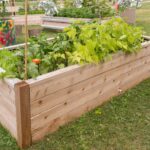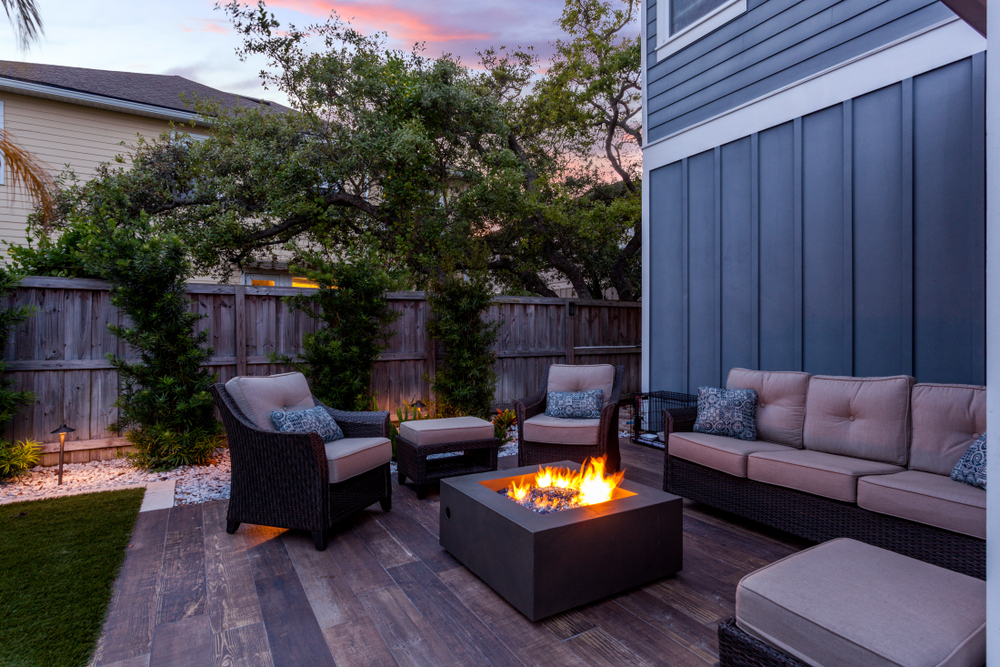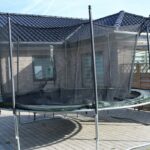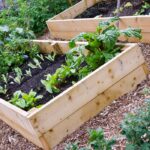You don’t need much space to build a beautiful raised garden bed, but you do need an area that receives direct sunlight for at least six hours of the day. It’s important to note that the shapes and sizes of raised garden beds vary widely, and the best one ultimately depends on what you’re planting and what you have room for.
The ideal raised garden bed is one that measures no more than 4 feet wide and 12-18 inches deep. You can choose a length that best suits your needs and environment. Make sure you also consider the orientation and irrigation of your raised garden bed before building one.
No matter the size of your raised garden bed, always make sure there’s enough space for the roots of your plant to grow properly. Let’s take a closer look at how you can determine the right length, width, and depth of your raised garden beds as well as which factors you should consider when planning one, so that you can build an ergonomic, energy-efficient raised garden bed.
What’s the Best Size for Raised Garden Beds?
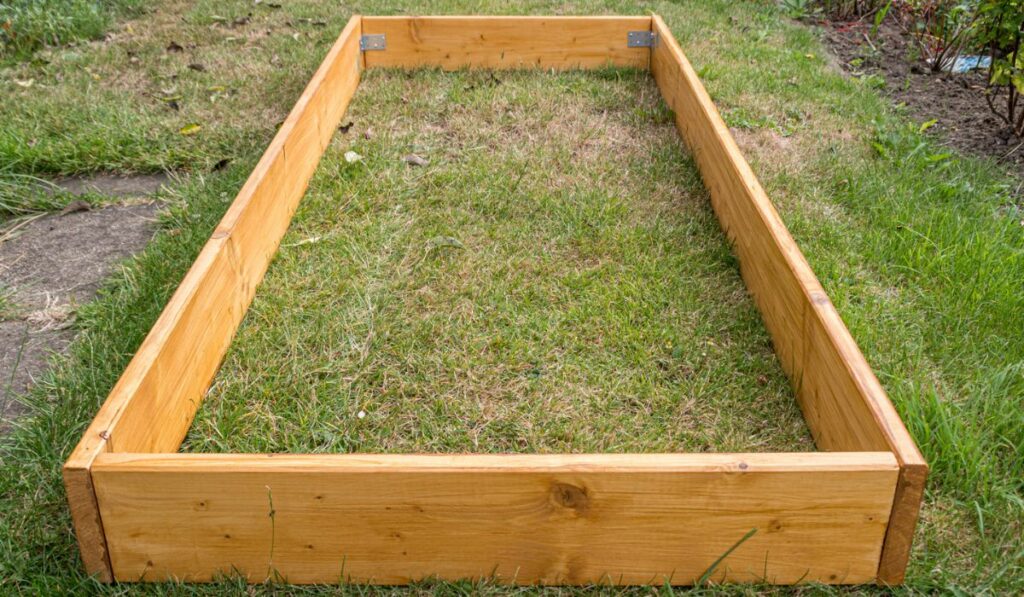
Remember that accessibility is the most important part of garden design. If your raised garden bed is too wide, there’ll be a lot of unusable space, but if it’s too narrow, then you’ll lose useful space. Let’s take a more in-depth look at what the best size for raised garden beds actually is.
Width
Ideally, your raised garden bed shouldn’t be more than four feet (1.2 meters) wide if you want to be able to access it from both sides. This width will allow you to reach past the center of the bed from both sides, providing you with optimum accessibility to your gardening area.
However, if you’re planning on placing your raised bed against a wall or positioning it in such a way that it can only be accessed from one side, then it’s best to build it two feet (60 cm) wide.
Remember that if you can’t easily reach past the center of your raised garden bed from both sides, then you’ve built it too wide!
Length
Although you can build your raised garden beds to any length, it’s more efficient to make them fairly short, so that you don’t have to walk especially long distances to get to the other side.
Always make sure the length you choose for your raised beds suits your needs. You can either make 4’x20’ rows or build 4’x4’ squares. As long as you go with a four-foot width, as we described above, then the length is really only limited by your budget and space.
Depth
A depth of 12 to 18 inches is ideal for a raised garden bed, but something as low as six inches can work as well. Most roots only need six inches of space for proper growth, although deep-root vegetables might need a bit more space.
It’s important to note that if you build a raised bed more than 18 inches deep, the pressure and weight of all that soil may eventually lead to serious structural issues.
How to Determine the Length and Width of Raised Beds
The maximum width of your raised garden beds is simply a matter of accessibility, comfort, and ergonomics. That means that you can determine the right width by measuring the distance you can reach across your raised bed from both sides to comfortably access all parts of it.
On the other hand, the length of raised beds is usually determined by the lengths of timber materials. For instance, railway sleepers are usually sold in eight-foot lengths, and using the entire thing without cutting can reduce costs, make construction easier, and avoid waste.
If you cut an eight-foot railway sleeper in half, you’ll get two four-foot pieces — the ideal width for raised garden beds. So, with only three railway sleepers and just one cut, you’ll be able to build a 4’x8’ raised garden bed.
How to Determine the Depth of Raised Beds
The right depth for your raised beds depends on what you’ll be growing in it, the surface you’ll place it on, how often you’ll need to water it, and the height requirements for any special accessibility situations.
Most vegetables are shallow-rooted, and their roots only need about 12 inches of soil for proper growth. This means that you can easily grow them in raised beds that are 15 or 16 inches deep.
Culinary herbs, like oregano, mint, thyme, and oregano also have very shallow roots. On the other hand, root crops, like carrots, or tall crops that can easily tip over in strong winds, like sweetcorn, need much deeper raised beds for healthy growth.
If you’re placing your raised bed directly over the soil, then the depth isn’t really important, as the plants can simply root into the ground if they need more depth. However, if you’re placing the raised bed over a hard, sealed surface like pavers, asphalt, or concrete, then the depth matters. The same also goes for raised garden beds with legs.
If you have limited mobility or have difficulty bending down, then it’s best to build elevated beds for easier access. These beds are usually waist-high and they don’t need to go directly into the ground. Instead, you can simply build a shallower bed and add legs to elevate it.
Important Factors to Consider When Planning a Raised Garden
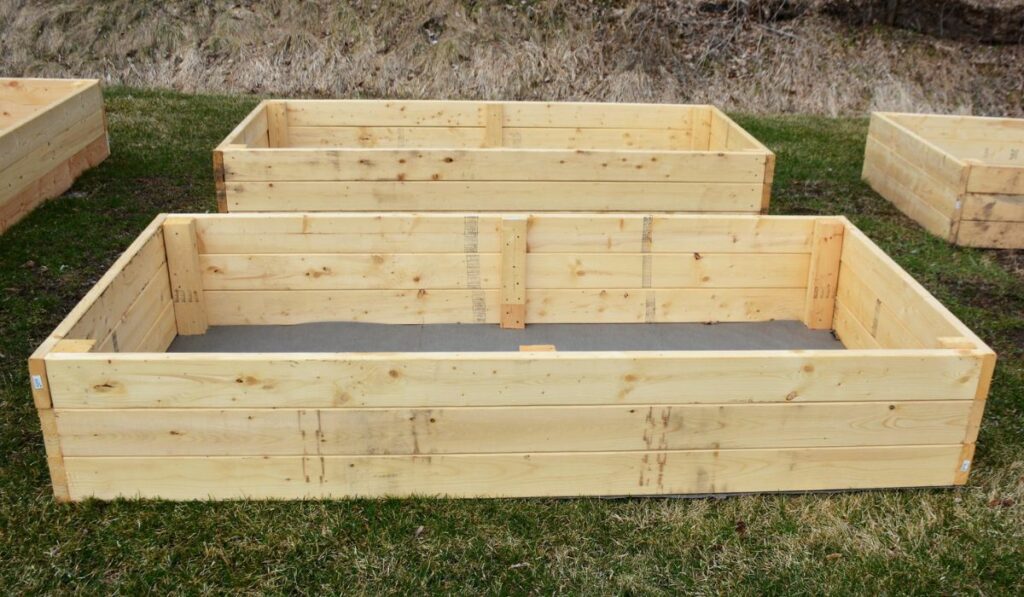
Raised garden beds are an excellent way to both organize backyard space and provide easy access to your fruit or vegetable gardens. However, there are a few factors you should consider when planning one:
Orientation
The orientation of raised beds isn’t really a problem as long as you leave more than enough space between each bed for easy access.
However, if you place the beds close to each other and in an east-west direction, then the taller crops will shade the lower ones in nearby beds. Taller plants will also shade the shorter plants behind them if both are in the same bed.
For this reason, it’s preferable to leave adequate space between beds and lay them out in a north-south orientation.
Irrigation
Make sure you consider your irrigation system when you’re planning your raised garden. Drip irrigation (on Amazon) is easier to install when the beds are placed in a straight, orderly pattern — preferably in a line.
On the other hand, you can place and adjust sprinklers to cover almost every garden layout, but they’re most efficient when the raised beds are in a square, rectangular, or circular pattern.
Lastly, since you’ll need to drag a hose through the garden for hand watering, a uniform bed layout and spacing work best.
Paths
If possible, you should lay out your raised beds in such a way that each bed has access to one main path that spans the entire length of your garden.
If you have a very large garden, then it’s better to opt for more than one path. To provide enough space for wheelbarrows, wheelchairs, and carts, make sure you leave at least four feet between each bed on the path.


